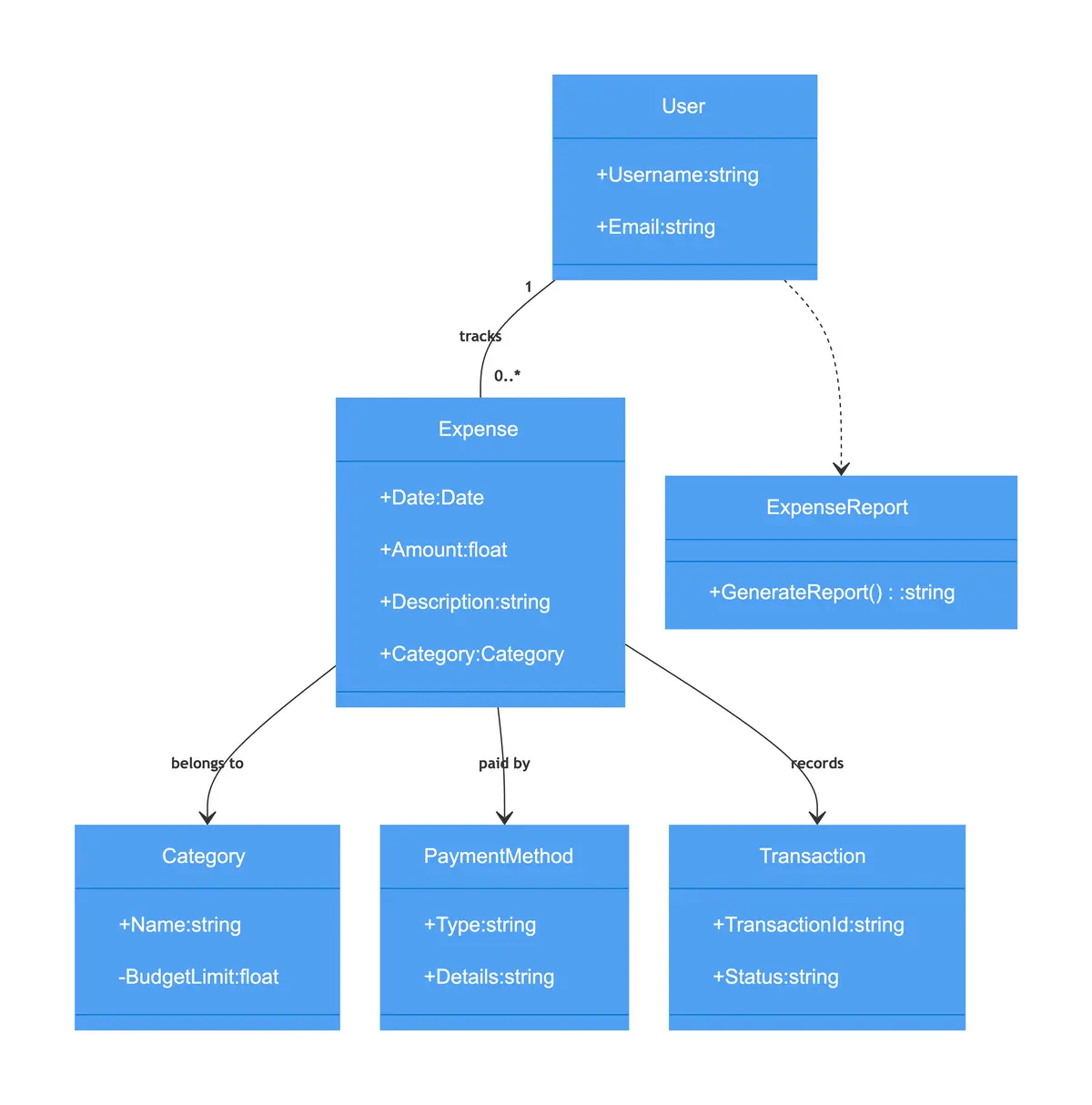The Expense Tracker Class Diagram represents a financial tracking system where a User records Expenses, which belong to different Categories. Users can generate Expense Reports to analyze their spending. Expenses are paid using a Payment Method and are linked to Transactions, ensuring financial tracking and budgeting.

Edit this diagram in Gleek
Expense tracker diagram code in Gleek
Expense
+Date:Date
+Amount:float
+Description:string
+Category:Category
Category
+Name:string
-BudgetLimit:float
User
+Username:string
+Email:string
ExpenseReport
+GenerateReport():string
PaymentMethod
+Type:string
+Details:string
Transaction
+TransactionId:string
+Status:string
User {1}-tracks-{0..*} Expense
Expense -belongs to-> Category
User -.-> ExpenseReport
Expense -paid by-> PaymentMethod
Expense -records-> Transaction
About class diagrams
Class diagrams are used in software engineering to describe the structure of a system. A class diagram uses Unified Modeling Language (UML) to show the classes, attributes, methods (or operations), and their relationships to each other in the system. Class diagrams prove valuable in object-oriented modeling. Class diagrams can be used to model the data structure or to design a system in detail.
Similar class diagram examples
Order processing system class diagram
Gym management system class diagram